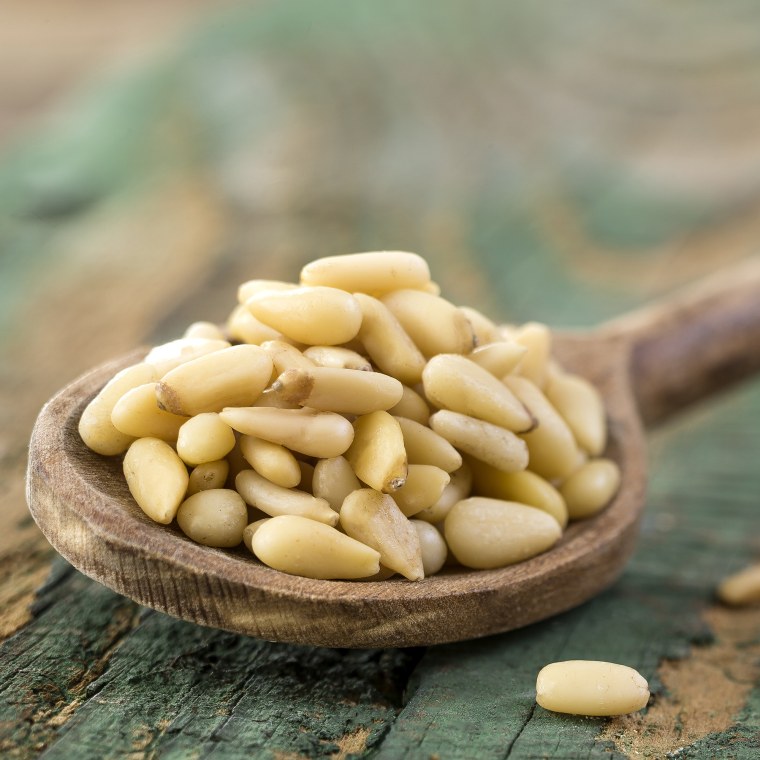On one end of the hierarchy of nuts, there's the common yet versatile peanut. And on the other, there's the outrageously priced pine nut, which makes the teardrop shaped nuts like the caviar of nuts.
They're delicious, but they're expensive enough that making pesto with them can quickly run up a grocery bill. And heaven forbid snacking on them. One ounce of pine nuts costs around $1.44, compared to around 42 cents for almonds, according to a review of prices on Amazon.
"When you taste a fresh pine nut, there’s nothing like it. It’s incredibly flavorful and they are so tasty," Linda Grimo, manager of Grimo Nut Nursery in Ontario, Canada, told TMRW. "But I don't cook with them a lot because they are expensive."
So even Grimo, a woman who has access to a nursery full of nut trees, doesn't cook with pine nuts as often as she'd like to due to the price.
Here's a look at why these morsels are so expensive.

They're slow growing
Good things take time, right?
Pine nut trees have a maturing period of 10 to 40 years. Compare that to almond trees, which take two to four years to harvest.
"They’re a very attractive tree, but they’re slow growing," Grimo said. "I’ve seen websites that say they produce in six to 10 years. I never want to tell my customers six years because they’ll be calling, so I err on the side of caution and say ten to 15 years."
The lesson here: Do something nice for your future grandchildren and plant a pine nut tree now on family property.
They're labor intensive to harvest
Pine nuts grow in forests in their native countries of China, Russia, North Korea and Pakistan, not on farms.
“Extracting the nuts is incredibly labor-intensive and this drives prices up," said Jason Kong, operations manager at Tridge, a market intelligence company focused on food and agricultural products. "Pine nut pickers have to climb up to the top of the trees using ladders and have to hang on the trees in order to drop the nuts to the ground, which requires months of professional training."
Grimo added that it's not the same as crawling up a walnut tree, for example, since the pine tree's branches are tighter. The nuts themselves grow on the tree's cones.
"We could produce an amazing pine nut here, but it would take 25 years to get an orchard really well established. It wouldn't be profitable for another 25 years," she said. "I can’t even imagine the cost of the land and the taxes while you’re waiting for these trees to drop some cones.
Supply and demand
Pine nuts aren't as common as other nuts, but demand keeps increasing in the United States and Europe. From 2008 to 2018, demand surged 236% in the U.S. and 347% in Europe, according to Kong.
“Pine nuts only account for around one percent of worldwide nut consumption but command a premium price in the market," Kong said. They’re used in various industries including bakery, confectionery, beverages, and cosmetics, as well as being extracted for oil."
They're not native to the U.S.
Most of the pine nuts in the United States are exported from China, which produces 8.1 megatons of the delicious nuts every year, according to Kong.
After China, North Korea, Russia and Pakistan are the world's biggest pine nut producers.
"Out of these markets, China is the biggest exporter of pine nuts, accounting for approximately 64% of global exports, and is also the leading source of pine nuts for the U.S., EU, and the U.K.," Kong said.
And, in some cases, the little nuts take quite a globe-trotting journey before they're ready to be tossed into a batch of pesto.
"In fact, a significant portion of in-shell pine nuts from other top producing countries are exported to China, processed, and then re-exported," Kong added.
